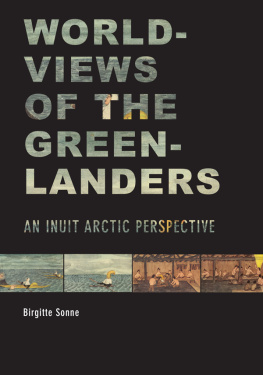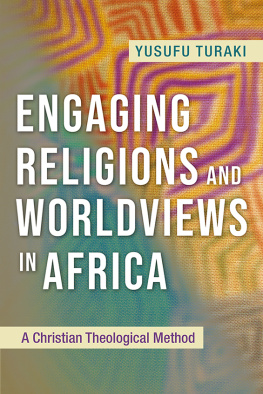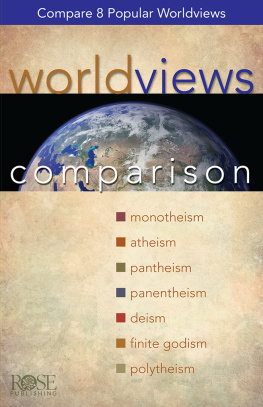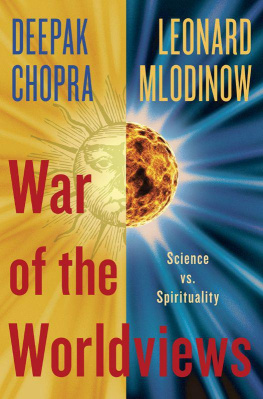Birgitte Sonne - Worldviews of the Greenlanders
Here you can read online Birgitte Sonne - Worldviews of the Greenlanders full text of the book (entire story) in english for free. Download pdf and epub, get meaning, cover and reviews about this ebook. publisher: University of Alaska Press, genre: Home and family. Description of the work, (preface) as well as reviews are available. Best literature library LitArk.com created for fans of good reading and offers a wide selection of genres:
Romance novel
Science fiction
Adventure
Detective
Science
History
Home and family
Prose
Art
Politics
Computer
Non-fiction
Religion
Business
Children
Humor
Choose a favorite category and find really read worthwhile books. Enjoy immersion in the world of imagination, feel the emotions of the characters or learn something new for yourself, make an fascinating discovery.
- Book:Worldviews of the Greenlanders
- Author:
- Publisher:University of Alaska Press
- Genre:
- Rating:3 / 5
- Favourites:Add to favourites
- Your mark:
- 60
- 1
- 2
- 3
- 4
- 5
Worldviews of the Greenlanders: summary, description and annotation
We offer to read an annotation, description, summary or preface (depends on what the author of the book "Worldviews of the Greenlanders" wrote himself). If you haven't found the necessary information about the book — write in the comments, we will try to find it.
Worldviews of the Greenlanders — read online for free the complete book (whole text) full work
Below is the text of the book, divided by pages. System saving the place of the last page read, allows you to conveniently read the book "Worldviews of the Greenlanders" online for free, without having to search again every time where you left off. Put a bookmark, and you can go to the page where you finished reading at any time.
Font size:
Interval:
Bookmark:

Text 2017 University of Alaska Press
Published by
University of Alaska Press
P.O. Box 756240
Fairbanks, AK 99775-6240
Cover design by UA Press.
Interior design by Rachel Fudge.
Author photo by Zsuzsanna Willkan.
This publication is supported by the Velux Foundation.
Figures redrawn by Lisa Devenish for printing.
Cover and endsheet images: Imaneqs conversion to Christianity, watercolor by Aron.
1. Imaneq is encountered and cut up by the smiling giant, Qungussutariaq.
2. Reassembled and supported by his grandparents, Imaneq rides or glides on his kayak sitting-skin towards land. He is blinded/enveloped by his bladder float.
3. Imaneq is saved and brought back to life by Southerners, who know the correct ritual procedure.
4. Back home Imaneq dreams about the life and light of heaven. Notice that the hunting bladder and the light from heaven are painted in the same yellow, luminous color.
Source: J. Meldgaard (1982: 1013), Greenland National Museum and Archives
Library of Congress Cataloging-in-Publication Data
Names: Sonne, Birgitte.
Title: Worldviews of the Greenlanders : an Inuit Arctic perspective / by Birgitte Sonne.
Description: Fairbanks : University of Alaska Press, 2017. | Includes bibliographical references. | Identifiers: LCCN 2017007893 (print) | LCCN 2017033908 (ebook) | ISBN 9781602233393 (ebook)| ISBN 9781602233386 (hardback) Subjects: LCSH: InuitGreenlandHistory. | InuitGreenlandSocial life and customs. | GreenlandHistory. | GreenlandSocial life and customs. | BISAC: SOCIAL SCIENCE / Anthropology / General. Classification: LCC E99.E7 (ebook) | LCC E99.E7 S6425 2017 (print) | DDC 998.2004/9712dc23
LC record available at https://lccn.loc.gov/2017007893
Imaneqs conversion to Christianity
Having studied Greenland, Arctic Canada, and Alaska for most of my adult life, my primary focus has been on the precolonial Greenlandic worldview, its key symbols, and changes brought about by early colonial trade and Christian missions. As no such exploration of the topic has been conducted since William Thalbitzer and Knud Rasmussen made their contributions almost a century ago and because fairly recent publications about the cosmologies of Canadian Inuit and Alaska Iupiat and Yupiit call for a Greenland companion, I feel that the time has come for a thorough presentation of the Greenlandic material. While some authors who write about Alaska and Canada make stray references to Greenlandic sources in English, German, and French translations, the extensive corpus in Danish and Greenlandic remains a closed book to most foreigners. These rich and revealing sources invite study, comparisons, and contemplation.
A Note on Terminology
Inuit in Greenland, Arctic Canada, and northern Alaska speak the Inuit languages or, rather, dialects, because they form a linguistic continuum (Michael Fortescue pers. comm.). The older Yupik languages are spoken by the Yupiit in Southwest Alaska, from Unalakleet in the north to Kodiak Island in the south, in the north on St. Lawrence Island in the Bering Strait, and by a very few native speakers among the Yupiit on the Chukotka Peninsula in northeast Siberia. The Aleut language is the oldest related language (Krauss 1988) and is probably mixed with a now-extinct Indian language (Fortescue 1998). The term Inuit has been established as a politically correct term for these people, but because not all Yupiit are thrilled to be called Inuit, I use Inuit/Yupiitboth in the pluralas a common term. The recent ban on using Eskimo is thus followed (except of course in quotations from older sources). Yupik in the singular is today the accepted term used for cultural characteristics of the Yupiit in Alaska (Yupik refers Chukotka and St. Lawrence Island). I rarely refer to the Unangan (Aleut Islanders), because they were not affected by the same Thule Culture influences thatreached all the other Inuit and Yupiit in the twelfth to fourteenth centuries. The term Eastern Inuit credits striking cultural differences between Inuit west and east of the Mackenzie River in Canada (Burch 1988b; Lantis pers. comm.). The Eastern Inuit thus include the vast majority of Canadian Inuit plus Greenlanders. In late historic times, however, the dividing line moved slightly east due to the immigration of western Inuit from northern Alaska (Usher 1971). Ethnic names of Canadian Inuit groups are used except for those of the Labrador Inuit (Nunavimmiut of the Nunatsiavut agreement 2005) and South Baffin Island (the southern Nunavummiut of the Nunavut agreement 1995). My distinctions between Greenland group names, outlined below, follow historic-linguistic criteria.
This introduction opens with a survey of regional names. Next it takes the reader through relevant points in prehistoric and historic times of Greenlands changing inhabitants, climatic changes, and exchanges within the region and with foreigners such as whalers, colonial traders, and missionaries. I discuss the term worldview and describe my method in comparison with those employed in recent research on Inuit and Yupiit worldviews. My method is similar to the Anthropological Field Study (AFS) method, which covers an entire field of related cultures (e.g., of Inuit and Yupiit). But because I also consider ethnohistorical issues, an outline of the contact histories of Arctic Canada and Inuit/Yupiit Alaska ends the section on method. The following evaluation of the sources, a longtime necessity in the Danish humanities, pays particular attention to the stepwise colonization of Greenland, region by region, from 1721 to its completion in 1894 and 1910 with the establishment of trade and mission in Ammassalik (East Greenland) and Avanersuaq (Thule), respectively (see , p. 9). Thus the impacts of trade, mission, and colonial administration differ according to time and place as do the discourses of the authors. Together such differences offer knowledge about changes in Greenlandic worldviews.
Then I will present my chosen theoriesthose of practice, perception, and perspectivismand finally make content summaries of chapters .
Greenland: Regions and Place-names
Two hurdles must first be overcome by new readers of Greenlands history and prehistory: the name Thule and the varying premises for changes in regional names.
Thule is the name of both a region and a culture. The region Thule is north of Melville Bay, which is now called Avanersuaq. The name Thule was indirectly given to the region by Knud Rasmussen, who in vain tried to persuade the Danish government to colonize this northernmost part of the country with mission and trade. He took on the responsibility himself, obtained funding, and in 1910 named his trading post the Thule station.
The Thule culture developed along the Arctic coast in northern Alaska and northwest Arctic Canada. It started to spread eastward about 1000 AD and reached northern Greenland by 1200. Themembers of this culture became the Inuit ancestors of present-day Greenlanders. The Thule culture was named in compliment to Rasmussen, because the first artifacts were excavated at Cape York (Comers Midden) during Rasmussens Second Thule Expedition (191618). The actual naming and first thorough description of the Thule culture, however, was done by Therkel Mathiassen based on his rich findings at Naujan, Repulse Bay, during the Fifth Thule Expedition (Gullv 2016: 14851). I shall reserve the name Thule for the culture and use Avanersuaq to describe the region.

Font size:
Interval:
Bookmark:
Similar books «Worldviews of the Greenlanders»
Look at similar books to Worldviews of the Greenlanders. We have selected literature similar in name and meaning in the hope of providing readers with more options to find new, interesting, not yet read works.
Discussion, reviews of the book Worldviews of the Greenlanders and just readers' own opinions. Leave your comments, write what you think about the work, its meaning or the main characters. Specify what exactly you liked and what you didn't like, and why you think so.







